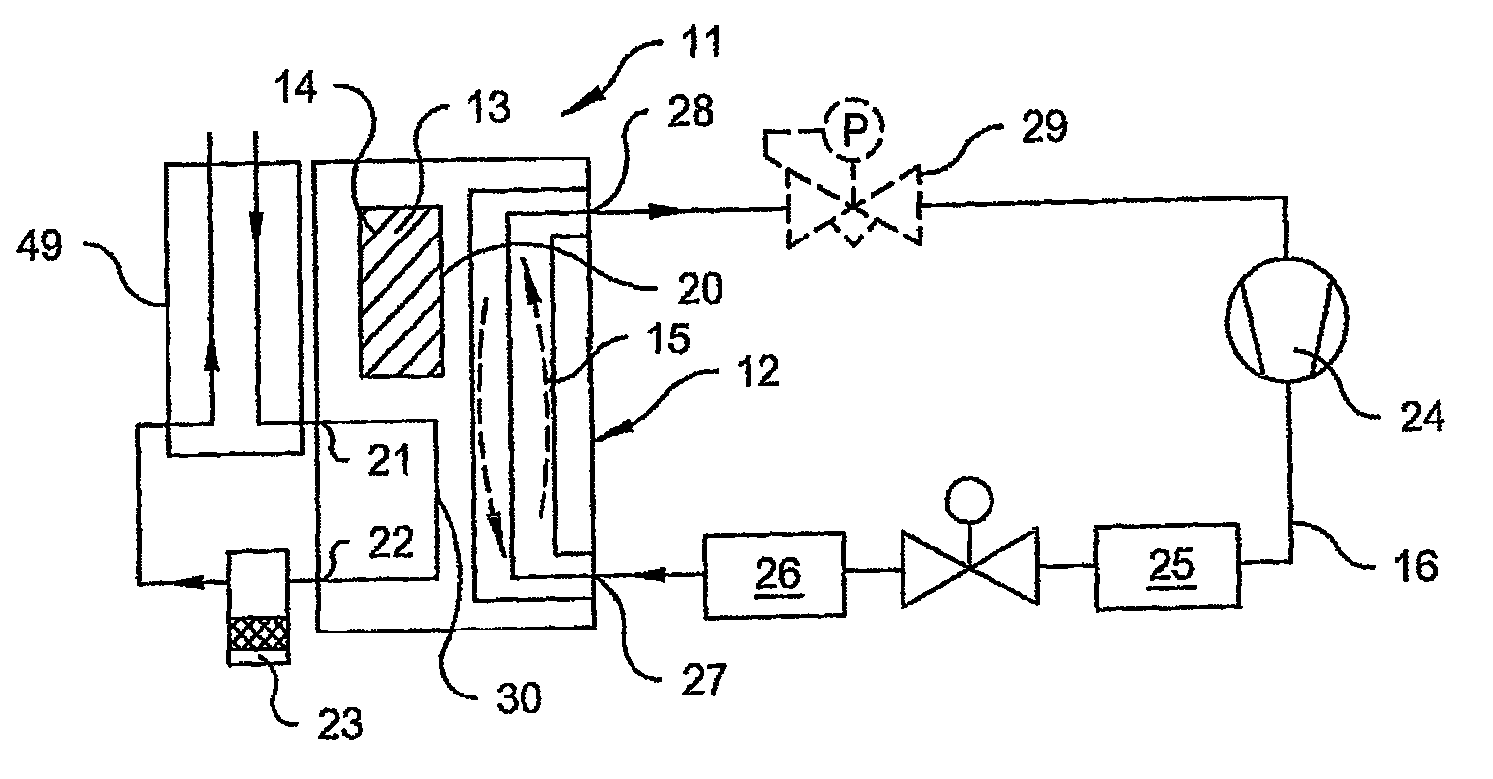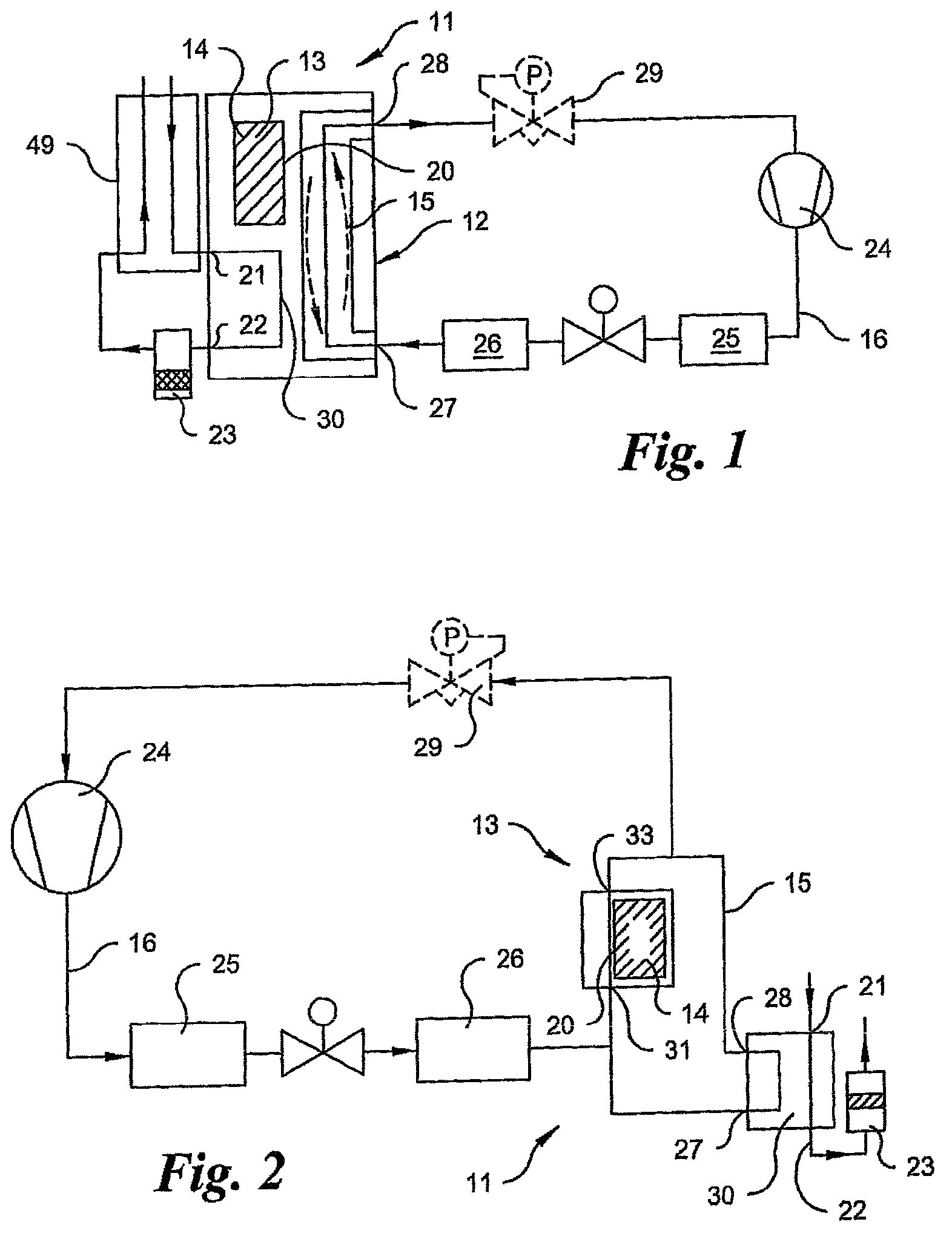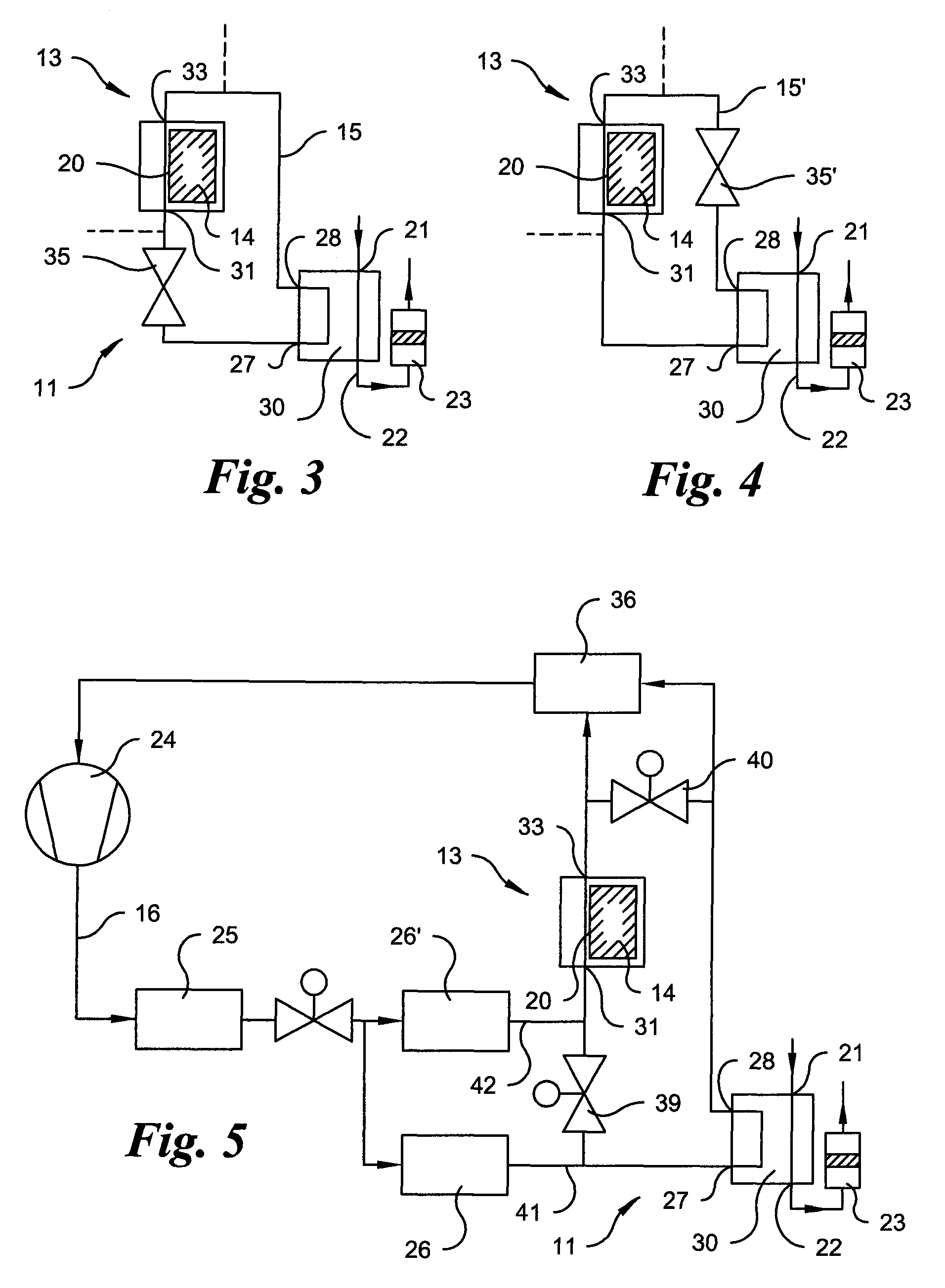Refrigerant dryer
a dryer and refrigerant technology, applied in refrigeration devices, heat storage plants, lighting and heating apparatus, etc., can solve the problems of limited control range of speed control, poor energy efficiency, and inability to provide energy-efficient control of cooling capacity, so as to improve the energy efficiency and improve the relationship of energy used
- Summary
- Abstract
- Description
- Claims
- Application Information
AI Technical Summary
Benefits of technology
Problems solved by technology
Method used
Image
Examples
first embodiment
[0062]In FIG. 1, a schematic diagram of an inventive refrigerant dryer 11, in particular for drying compressed air, is illustrated. A central element of the refrigerant dryer 11 is a pressure fluid-refrigerant agent-heat exchanger 30, which first of all comprises a compressed air inlet 21 and a compressed air outlet 22, hence is traversed by a flow of compressed air to be dried, which may also be conveyed in a plurality of compressed air ducts 18 (presently not shown). A condensate separator 23 then follows downstream of the compressed air outlet 22 of the pressure fluid-refrigerant agent-heat exchanger 30 in a manner known per se, which separates the liquid condensed out by the cooling in the pressure fluid-refrigerant agent-heat exchanger 30 from the compressed air flow. The compressed air flow is then made available to further applications that require dry compressed air. Moreover, the present embodiment comprises an air-air-heat exchanger 49 which pre-cools the compressed air fl...
second embodiment
[0075]In FIG. 2, a schematic diagram of the refrigerant dryer according to the invention is illustrated, wherein the accumulator-side heat exchanger 20 and the pressure fluid-refrigerant agent-heat exchanger 30 in this embodiment are realized to be spatially separated and are traversed in parallel during operation of the refrigerant compressor 24 and the primary loop 16, respectively.
[0076]In this arrangement, a lower connection 31 of the accumulator-side heat exchanger 20 is arranged above the pressure fluid-refrigerant agent-heat exchanger 30 and is joined to the lower connection thereof defining the refrigerant inlet 27. Likewise, an upper connection 33 of the accumulator-side heat exchanger 20 is joined to an upper connection 33 of the pressure fluid-refrigerant agent-heat exchanger 30 defining the refrigerant outlet 28.
[0077]During a standstill of the refrigerant compressor 24, refrigerant condenses in the accumulator-side heat exchanger 20 and flows through the lower connectio...
PUM
 Login to View More
Login to View More Abstract
Description
Claims
Application Information
 Login to View More
Login to View More - R&D
- Intellectual Property
- Life Sciences
- Materials
- Tech Scout
- Unparalleled Data Quality
- Higher Quality Content
- 60% Fewer Hallucinations
Browse by: Latest US Patents, China's latest patents, Technical Efficacy Thesaurus, Application Domain, Technology Topic, Popular Technical Reports.
© 2025 PatSnap. All rights reserved.Legal|Privacy policy|Modern Slavery Act Transparency Statement|Sitemap|About US| Contact US: help@patsnap.com



